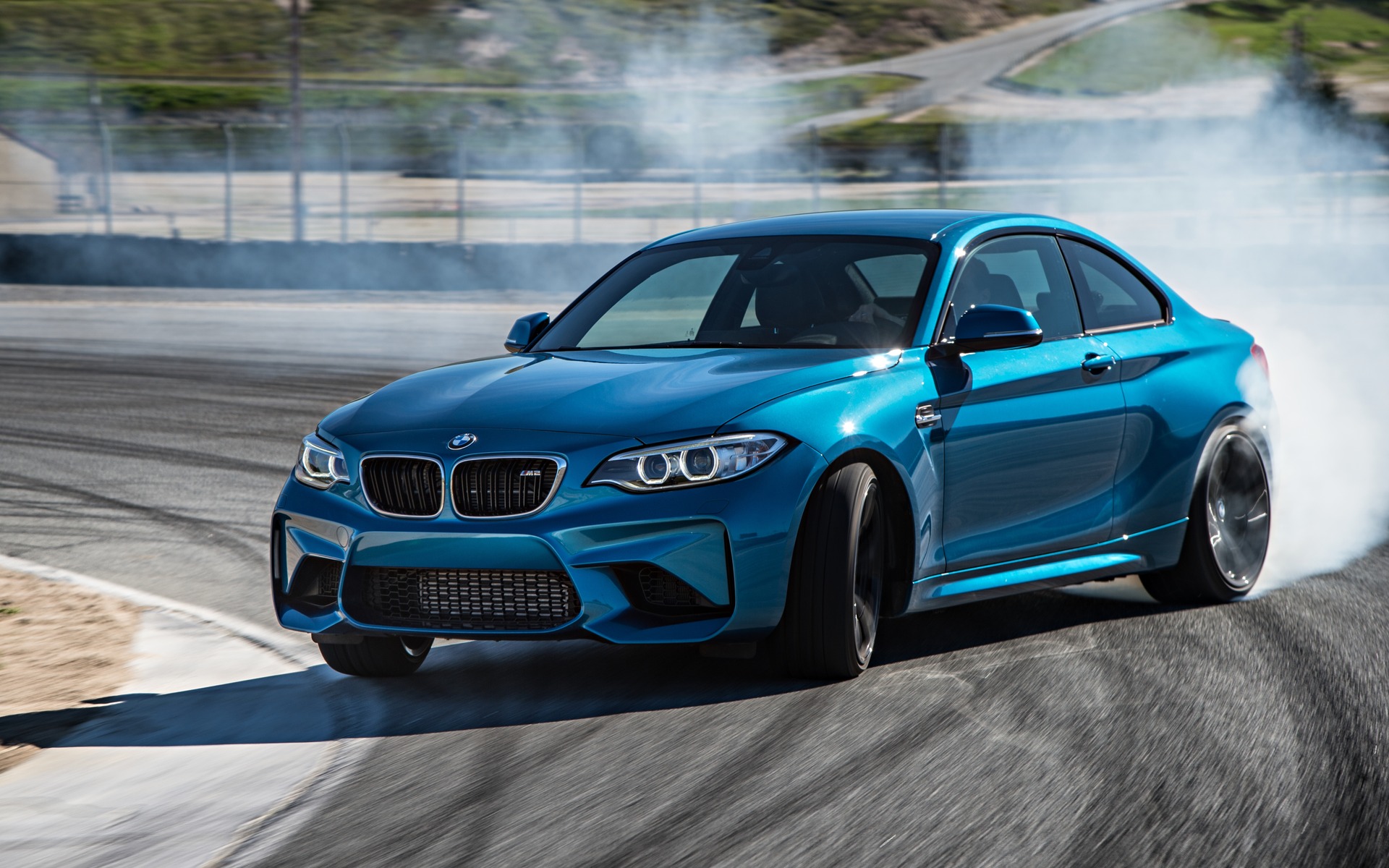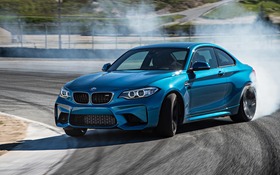2016 BMW M2: The Soul of BMW

| Strong points |
|
|---|---|
| Weak points |
|
FWAAAP… FWAAAP… FWAAAP… that’s one of the most enjoyable sounds heard behind the wheel of the BMW M2 on the Laguna Seca track in California. That particular sound comes from the contact between the Michelin Pilot Super Sport tires and the low-profile ridges at the entry points, apexes and exit points of the 11 curves along this 3.6-km circuit.
The track also includes striking elevation changes, like the one on turns 8 and 8A, known as the famous Corkscrew, that drops the equivalent height of a seven-storey building. Fortunately, my first experience here dates back to 1981, when the track was even faster than in its current form, and I immediately found my way around. What happened next? Nothing less than pure happiness…
Spiritual successor to the 2002 Turbo
The new 2016 BMW M2 is in some way the spiritual descendent of the legendary 2002 Turbo, sold by the German manufacturer in the Seventies. A more direct lineage also exists with the 1 Series M Coupé, which won The Car Guide’s sports car comparison test in 2012.
However, unlike the 1M Coupé that was a skunkworks project built almost secretly by a group of M division engineers, and without the support of BMW management, the development of the current M2 was performed in parallel with the 2 Series range. The M2’s official launch was officially held at the latest Detroit Auto Show.
Ready for the track
On the very fast Laguna Seca circuit, which requires the greatest possible momentum in curves, the M2 is truly in its element. Weight? 1,565 kg with the standard six-speed manual gearbox, or 1,590 kg with the seven-speed, dual-clutch transmission. Weight distribution? Almost perfect at 51% front and 49% rear. Tires? Michelin Pilot Super Sport rubber, 245/35R19 at the front and 265/35R19 at the rear.
Output? 365 horsepower, almost as much as in the new Porsche 911 Carrera. Torque? 343 pound-feet, or 369 with the Overboost function. Chassis? Almost the same one as the M3, with a forged aluminum suspension and an active electronic differential. Technically, all the elements come together to boost driving pleasure in this coupe that boasts a classic silhouette.
Easier to drive at its limits than the M4
On the Laguna Seca track, the 2016 BMW M2 is both agile and playful, and easier to drive at the limit than the M4. To optimize handling in this particular environment, the driver can simply activate the Sport Plus mode to delay the electronic stability control system’s intervention, allowing some terrific, throttle-controlled drifts while exiting a corner and keeping that electronic “safety net” in case the pilot messes up.
Add to that the Smokey Burnout feature, available with the dual-clutch gearbox, which allows wheelspin during full-throttle acceleration. We instantly become one of our tire supplier’s favourite customers… the BMW M2 even includes two custom-tailored applications for driving on a track; one can control a GoPro camera while the other records lap times.
What we like less
Among the car’s weak points, let’s mention the almost symbolic rear seats, very faint turbo lag (that’s more noticeable on the road than on the track), a ride that’s not too comfortable even with the Comfort mode activated on the highway as well as the torturous design of the openings located on each side of the big air vent in the front bumper. There isn’t much to complain about.
We can’t even criticize BMW in regards to the car’s price or the cost of options. The MSRP is set at $61,000 with the manual gearbox, and only three options are available: the dual-clutch transmission ($3,900), the Convenience Telephony package ($600) and metallic paint ($895).
For driving enthusiasts, the M2 isn’t lacking in qualities to win them over, and buyers’ expectations will be met in this car that will provide great thrills behind the wheel, as long they’re willing to sacrifice comfort. The only thing that’s left to do is choose the colour.
- Check out our BMW Zone











